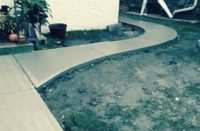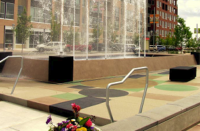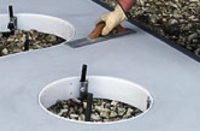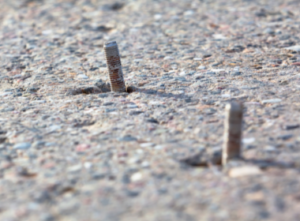
When it comes to the decorative contract business, nothing beats a great portfolio. You can tell your prospective clients all you want about your ability to meet deadlines and come in under budget with quality work that’s both innovative and on-target – but showing counts for a whole lot more than saying.

With photos of projects completed for satisfied clients, you can get your foot in the door. After that, you can wow them with your savvy, punctuality and budget mastery. But it’s that first part that’s the toughest. “I had been active in the decorative concrete industry since 1986 prior to starting Trademark in 1997, so I had solid contacts and a very good understanding of the industry,” says Lance Boyer, 48, president of Trademark Concrete Systems Inc. “We began with a small core of six highly experienced employees and earned our way to bigger and better jobs each year. I believe that slow growth coupled with skilled, hard-working, quality-minded individuals has been the key to our success.” For Boyer, proving his ability is no longer an issue. After a dozen years, Trademark boasts some 60 employees in two Southern California locations and an online photo album full of projects that showcase outstanding range and aesthetics.

Backyards and small commercial
Boyer has built enough of a name for himself and his company to be able to open and expand offices in Orange and Ventura counties, a fulfillment of his long-term strategy to serve the sprawling Los Angeles metro area from two counterbalanced locations. Today, Trademark Concrete Systems is one of the largest decorative concrete contractors in the United States. The company Web site, at Trademarkconcrete.com, shows off landmark work for a diverse roster of commercial, retail, municipal, religious, recreational, educational and medical clients. Along the way, Boyer’s been able to compile pictures that are, indeed, worth more than a thousand words when it comes to new-client pitches.
All it took was patience and perseverance. “We started with a core of very good craftsmen doing backyards and small commercial work,” Boyer says. Trademark worked its way up to “some nice commercial jobs in the $100,000 to $200,000 range after about a year in business.” Assignments even larger eventually followed, including project work for municipalities, major universities, resorts and museums. As Trademark grew, Boyer and his company won the admiration of such repeat customers as senior project manager Tom Jones of C.W. Driver, a major builder based in Pasadena, Calif.

“They’re very decorative and absolutely top quality,” says Jones. “It’s a very hassle-free relationship. They just do the work and I don’t have to hear from them. Quite frankly, I wish all of my contractors were like them.”
An education in achievement
The rough economy hasn’t put a damper on Trademark’s growth, though Boyer obviously prefers not to jinx himself on that account. “I don’t like to talk about it much, but we’re as busy now as we’ve ever been,” he says. “Once you’ve established relationships with the premier general contractors and the designing community, you can keep the work coming in even during times like these. At least that’s how it’s worked for us so far.”

The versatile nature of the Trademark project portfolio helps balance things out. While Boyer hasn’t really noticed any weak market segment except for housing, Southern California’s educational and medical facilities seem to offer particularly robust areas of opportunity. The company has completed interior and exterior work for public and private schools alike, including Asuza Pacific University, Pepperdine University, UCLA and many others.
For California State University, Fullerton, Trademark stained the 35-foot-high vertical walls of a student recreation center. Other recent projects include 70,000 square feet of exterior plazas and a grand entrance walkway at the Los Angeles County Museum of Art, a project Boyer refers to as “one of the most spotlighted projects in Los Angeles in a long time.” Trademark’s contribution to the project featured decorative saw-cutting and concrete with a fine sand finish achieved with a specialty surface retarder. Then there’s Splash! For the 14-acre Regional Aquatics Center, owned by the City of La Mirada, Calif., Boyer’s work crews installed 150,000 square feet of specialty concrete, utilizing a fine surface retarder with nonslip properties in a kids’ play area and on three pool decks.

Still striving
Boyer supports his growth by enthusiastically supporting the general contractors, landscape designers, architects and property owners who make up his valued client base. This involves, in part, “making up a lot of no-cost samples and offering lunchtime educational programs for the design community,” he says.
The company also provides a popular and easy-to-use online software program for product matching that considers color group, aggregate, finish and other factors. Most importantly, Boyer maintains project versatility and takes work where he finds it. “Decorative concrete presents itself in many different facets,” he says. “We’re constantly training and directing our workforce to be as versatile as possible while maintaining the highest standards of quality and service our clients have come to expect.”
Although he’s arrived at a point in his career where he could pick and choose, Lance Boyer is still striving to update and improve that already impressive portfolio of achievement.
www.trademarkconcrete.com















